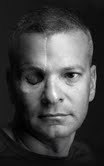
Army Capt. Ivan Castro, center, accepts the ceremonial torch from Air Force Capt. Tony Simone during the opening ceremony of the 2012 Warrior Games in Colorado Springs, Colo., May 1, 2012. Since his combat injury in 2006, Castro has sought to redefine the word “disability” as he completes one monumental feat after another while still serving on active duty in Special Operations. USO photo by Joseph Andrew Lee
If you have followed this blog since the start of the summer you have read some pretty remarkable stories of wounded veterans using adaptive sports to get their lives back.
You read about the story of Brad Snyder, the blind Navy Explosive Ordnance
officer who broke World Paralympics swimming records in London less than a
year after being hit by an Improvised Explosive Device in Afghanistan. You’ve read the inspiring story of Jim Castaneda, who, to his 10-year-old son, was “better than Superman” for having the courage to persevere in the face of adversity at the 2012 Warrior Games. And you read the recovery story of Christopher “Aggie” Aguilera and his co-pilot, Tony Simone—the only two survivors of a horrific helicopter crash just two years ago.
After hearing all those remarkable stories, however, I am still floored when I meet people like Army Capt. Ivan Castro. I caught up with him on the final leg of a 3,800 mile bicycle ride across the country, where he taught me what it is the blind can do.
He was extremely tan from the long ride and wearing sunglasses, I couldn’t tell at first that his entire right cheek was a prosthetic, that he is missing his right eye or that shrapnel had taken sight from his other eye. He was wearing long sleeves, so I couldn’t see the scars there either. I didn’t know that pieces of his arm and shoulder were gone. I did, however, notice the black steel bracelet around his wrist inscribed with the names of the two soldiers who lost their lives in the blast that nearly killed him.
He never takes that off.
A native of Hoboken, New Jersey, Castro has served in Special Operations since 1999, and still serves on active duty today. He’s fought in every climb and place from Bosnia to South America, Iraq and Afghanistan. In 2006, he was commanding a joint recon-scout sniper platoon from a rooftop in Youssifiyah, Iraq, when an 82mm mortar shell exploded five feet from his position. He was severely wounded and evacuated back to the States in critical condition. It took nearly 40 surgeries to repair his body, but his vision could not be restored.
“I had no clue what the blind could do,” said 44-year-old Castro. “As a service member you don’t think about these things. You train, deploy, and it’s like a black and white situation. Black, you come back in a body bag—white, you come back fine. We don’t think about that gray area … when you come back injured.”
For the past six years he has used adaptive sports to push the limits of his recovery. He has completed more than 30 tandem marathons, rode a tandem bicycle from San Francisco to Virginia Beach, and now has his sights set on hiking the Appalachian Trail.
“I’ve been blessed,” he said. “I have both legs, both arms, I can breathe and speak on my own, and I have a network of help from family, friends and the Special Operations community. Part of what has made my recovery so successful has been sports like cycling.”
After he was injured he couldn’t walk, so he had to start from scratch on a
mechanical bike. He graduated from recumbent cycle to upright bicycle to elliptical, spinning, then on to tandem cycling with a sighted partner—once a week, twice a week, and then three times a week.
“It’s fun, but not easy on the nerves,” said Castro. “When you’re on a bike and you’re blind, you are putting all of your faith and confidence in your pilot. It’s one thing when you’re walking around with a cane, or even running, but when you’re on a bicycle and you’re going 60 miles per hour down some hill somewhere in Colorado, anything can happen. It’s an incredible rush, feeling the inertia, but not being able to see what’s in your path can make it scary if you don’t trust your pilot.”
“Bill [his civilian pilot] had the patience, maturity and skill level to take me across the country,” said Castro. “That’s not something that was easy to find. If you talk to any cyclist they will tell you they would like to cycle across America, but very few have what it takes to do it. I’m very grateful to Bill and to World T.E.A.M. Sports for giving me the opportunity to do this.”
Undeterred by things most of us might consider “obstacles,” Castro is on a personal mission to redefine how we understand and perceive persons with disabilities.
Perhaps this is why he was the first blind service member asked to walk into Brad Snyder’s hospital room after he was hit by an Improvised Explosive Device last September. Perhaps this is why he was chosen to stand next to the First Lady and receive the torch from Tony Simone and Aggie during the opening ceremony at the 2012 Warrior Games.
“I don’t dwell on what I’ve lost,” he explained. “I just concern myself with positive people always and am grateful for what I have. It was a Marine who came into my hospital room and inspired me, just as I might have inspired Snyder. Civilians like Bill and the USO volunteers that have come along for this ride—they do their part to drive me. I’m not a one-man show, and I’m not special.”
“I depend—just like all of us do—on other people, and as long as I have my network of support, I know exactly what it is the blind can do,” he concluded. “Anything they want.” — By Joseph Andrew Lee, USO Staff Writer








